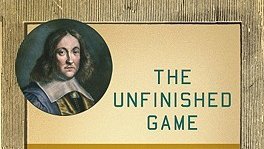
I’ve recently read @mpershan's book “Teaching math with examples”. Here’s what I learned, noticed and wondered. Thread. #mathreads 

1. Worked examples are completed solutions that we ask students to learn from. They are preferably used in the beginning of the learning cycle.
2. Having read Liljedahl’s Thinking Classrooms, I found a lot of differences between the two approaches. But a common factor is the emphasis on student thinking: “Students don’t learn from a worked example; ss learn when they think actively and deeply about a worked example.”
3. Pershan presents the idea that students don’t primarily learn from solving a problem – they learn from thinking about the solution. Self-explanation may be the source of the effectiveness of both worked examples and problem-based instruction.
4. Pershan points out that when students solve new problems, they use their existing – often inefficient – methods. Only a small part of the lesson is thus spent on studying efficient methods. I wonder what a researcher advocating for problem-based learning would say to that.
5. This is for me a key quote: “The choice is not between solving a problem and studying its solution; it’s about when you choose to prioritize either of these things, and research suggests that there are benefits of studying examples in the early stages of learning.” p. 33
6. I really liked the idea of presenting system of equations with Venn-diagrams. Students give examples of numbers belonging to the left circle, and then numbers belonging to the right circle – making it very visual that there may be numbers belonging to both circles. 

7. I like the idea that before teaching a certain proof, you let students study the equivalent goal free problem. That way the students will notice important aspects of the task/diagram/geometric figure, which will make it easier for them to follow the proof.
8. I also liked the idea of giving students a proof, without any explanations, and asking them to motivate each step.
9. Pershan shows how you can organize content (words, pictures) on a page, so as not to incur the split attention effect. Having read this, it struck me that two column proofs are terrible in this respect – they really make the reader suffer from split attention.
• • •
Missing some Tweet in this thread? You can try to
force a refresh







